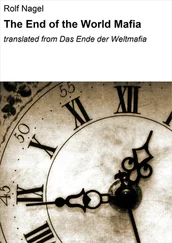John conveys the impression that Christians in the seven cities face a terrible choice. They are at risk of forfeiting heaven if they yield to the temptations of Roman paganism, and they are at risk of forfeiting their lives if they remain strictly faithful to Christian beliefs and practices. Indeed, the book of Revelation encourages us to imagine its first readers and hearers as a community of imminent martyrs, each in peril of betrayal, arrest, torture, and execution by Roman authority, and each one willing to face death at the hands of the satanic deputy who sits on the imperial throne of Rome rather than engage in an single act of idolatry.
“Fear none of those things which thou shalt suffer,” writes John, passing along the word of God. “Behold, the devil shall cast some of you into prison, that ye may be tried; and ye shall have tribulation ten days: be thou faithful unto death, and I will give thee a crown of life.” 105
The point is made in several of the stranger visions that John describes in Revelation. Among the diabolical creatures that he beholds, for example, are those two “beasts,” one rising out of the sea and the other rising out of the land. The first beast is given the power “to make war on the saints,” 106by which John means the faithful Christians, and the second beast is empowered “to cause those who would not worship the image of the beast to be slain.” 107Later, when the Lamb opens the fifth seal of the scroll on which the fate of the world is written, John sees an eerie sight “under the altar” in the celestial temple: “the souls of them that were slain for the word of God”—that is, the Christians who were martyred by the Roman authorities. 108
Yet, among all the Christians in all of the seven cities of Asia, John identifies only a single flesh-and-blood victim who has apparently been put to death for refusing to submit to the demands of Roman law. “You did not deny my faith,” he writes to the church at Pergamum, quoting the Son of God, “even in the days of Antipas, my witness, my faithful one, who was killed among you, where Satan dwells.” 109The word that is used to identify the unfortunate Antipas—“witness”—appears in the original Greek text of Revelation as “martys,” the root of the familiar English word martyr. 110Antipas, as it turns out, is the one and only martyr in all of Revelation whom we know by name.
The fate of the lone martyr is consistent with what we know about the historical setting of Revelation. Pergamum was, in fact, one of the towns where the Roman governor stopped to hear cases and hand out judgments, and it may have served as his official place of residence toward the end of the first century. And it is true that the death penalty was inflicted on some Christians who took the counsel of preachers and prophets like John and refused to make any gesture of compliance with Roman authority. Indeed, precisely such a scene is described by Pliny the Younger, who was called upon to examine and judge a few suspects who had been denounced as Christians by an informer when he served as governor of Bithynia and Pontus in the early second century.
“The method I have observed towards those who have been denounced to me as Christians is this: I interrogated them whether they were Christians,” writes Pliny to the emperor Trajan. “Those who denied they were or had ever been Christians, who repeated after me an invocation to the Gods, and offered adoration with wine and frankincense to your image, which I had ordered to be brought for that purpose, together with those of the Gods, and who finally cursed Christ—none of which acts it is said, those who are really Christians can be forced into performing—these I thought it proper to discharge; if they confessed it, I repeated the question twice again, adding the threat of capital punishment; if they still persevered, I ordered them to be executed.” 111
“Emperor worship,” as Pliny allows us to see, amounted to nothing more elaborate than spilling some wine, a so-called libation offering, and casting a pinch of incense on the altar fire before an image of the emperor. The ritual was seen less as an affirmation of religious faith than a gesture of civic virtue not unlike the recital of the Pledge of Allegiance in contemporary American classrooms. But the ritual also served as a kind of loyalty test: if a symbolic offering to the emperor was meant to ensure the safety and security of the empire, then any citizen who refused to make the gesture was suspected of disloyalty if not outright treason. And so the crime that a martyr committed in the eyes of Roman law, like the offense for which Jesus of Nazareth was condemned to death, can be understood as a purely political one.
Pliny also makes it clear that only the most zealous Christians were made to suffer the death penalty. Someone who confessed to being a Christian was made to repeat the confession three times—and they were pointedly reminded of the penalty for sticking to their story, an interrogation technique that apparently prompted a great many of the accused to withdraw their confessions of faith. “Others who were named by that informer at first confessed themselves Christians and then denied it,” writes Pliny, referring to the informant who had laid secret charges against the Christians under interrogation. “They all worshipped your statue and the images of the Gods and cursed Christ.” 112
So it is plausible that Antipas suffered the same fate that Pliny describes. Perhaps he was denounced to the authorities, interrogated by a magistrate, and executed on the order of the Roman governor, just as John seems to suggest. But all the other Christians whose deaths are contemplated in the book of Revelation—the souls whom John glimpses “beneath the altar,” and the 144,000 male virgins whom we are invited to regard as sacrificial offerings to God—appear only in John’s visions of the end-times.
Is it possible, then, that John himself knew only a single Christian martyr?
John insists that Christians must endure a long and bitter ordeal—the Tribulation, as it has come to be called—before they are finally admitted into “a new heaven and a new earth.” 113And modern scholars agree that Revelation and the whole apocalyptic tradition are best understood as a way of coping with oppression and persecution by imagining a better world to come: “The theology of the Apocalypse is formulated in the face of persecution, banishment, jail and execution,” according to Elizabeth Schüssler Fiorenza, a feminist Bible scholar and advocate of “liberation theology” who is also a leading Catholic commentator on the book of Revelation. 114If Revelation makes sense at all, it does so only as a verbal balm for the bodies and souls of suffering saints.
“One thing of which we may be certain is that the Apocalypse, unless the product of a perfervid and psychotic imagination,” writes New Testament scholar J. A. T. Robinson, echoing a certain conventional wisdom, “was written out of an intense experience of the Christian suffering at the hands of the imperial authorities, represented by the ‘beast’ of Babylon.” 115
Yet it is not a settled fact that the first readers and hearers of Revelation were themselves the victims of imprisonment, torture, and death. John himself appears to live in a pagan world in which it was all too easy for a Christian to make his or her peace with Roman authority. Indeed, John would have been far happier if it had been otherwise; clearly, he prefers dead martyrs to faithless Christians who are willing to compromise with Roman authority in order to live the good life. Only in John’s visions of the end-times, and not in the historical record, do we find the worst excesses of Roman persecution. Or, to put it rather more charitably, the book of Revelation “expresses the author’s expectation of persecution,” as Adela Yarbro Collins explains, rather than his experience of persecution. 116
Читать дальше










